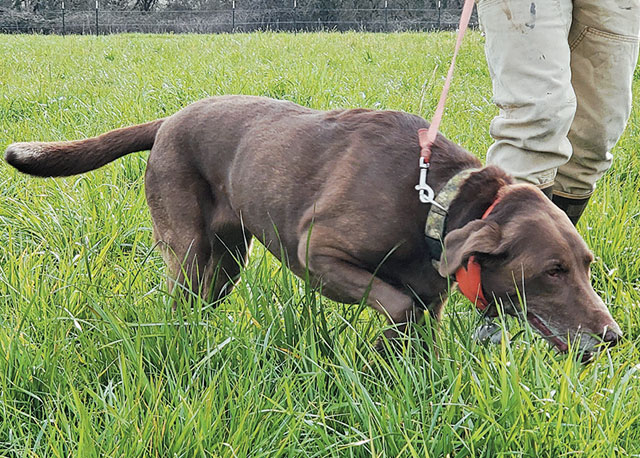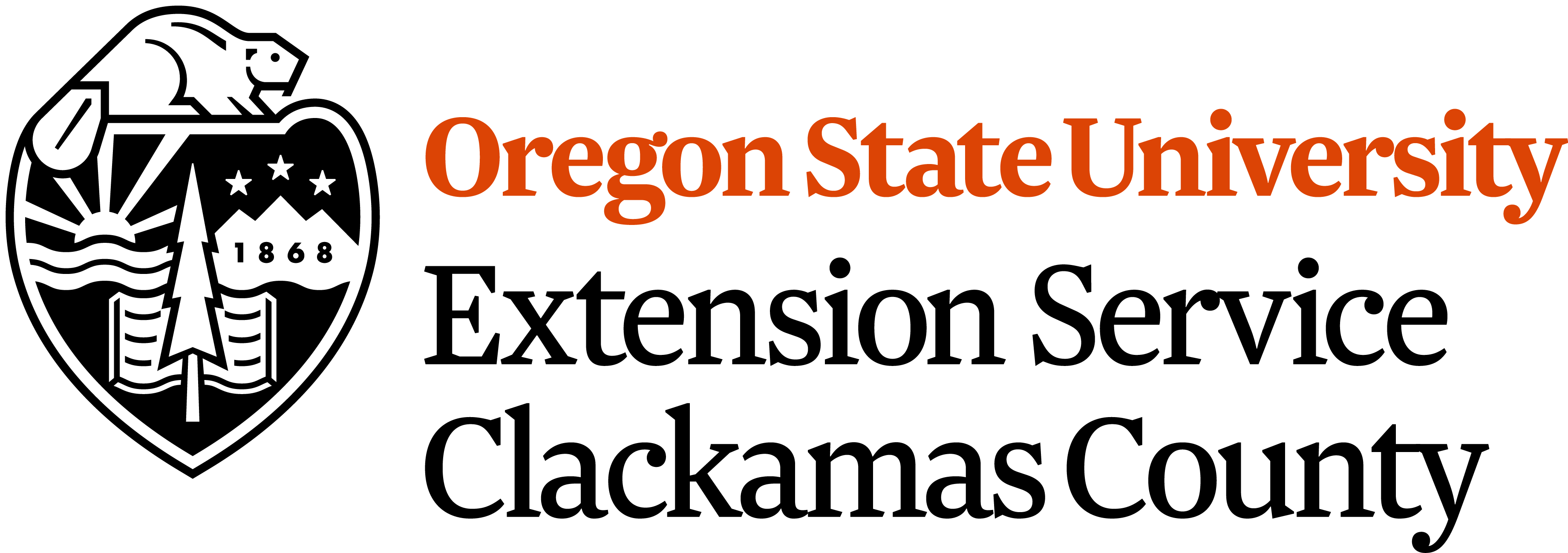AGRICULTURE
Can dogs help with vole management
in fields, pastures, and orchards?

Dog, with handler, hunting for active vole holes in a pasture.
One of the biggest agricultural pests in the Willamette Valley are voles. Voles resemble mice, but they have a distinctively shorter tail, along with other, less obvious differences. They eat a wide variety of crops: grasses, grains, alfalfa, vegetables, hazelnut trees, and many more.
A team of OSU Extension scientists, representing orchard crops, vegetable crops, pastures, school pest control, and wildlife biology have come together to investigate means of controlling vole populations. In particular, we are interested in how dogs might be able to assist with vole management. We want to capitalize on dogs’ superior sense of smell. Trapping with old-fashioned mouse traps can make an impact on vole populations, but it is laborious. In this project, we are looking at whether using trained dogs to assist in placing traps can make the trapping process more efficient. Will the dog identified holes or the human identified holes yield more voles trapped?
This winter, we will run the full trial: several trapping dates on several farms with multiple plots. In the “dog plots”, dog and handler teams will identify and flag presumably active vole holes. In the “human plots”, unassisted humans will do the same. Then the team will set the traps and return the next day for the trapping results. The following summer, we will measure crop damage across our plots to see if our efforts make an impact.
In early December, we held a Voles, Drones, and Dogs workshop for folks from across the Willamette Valley. We covered vole ecology and management and shared how OSU is exploring canine-assisted detection and the potential use of drones to assess crop damage.
